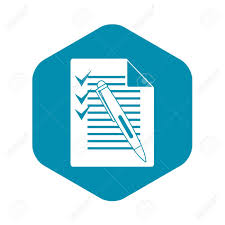WBCS Exe Etc Exam Main Optional Subject Geology Syllabus
Paper – I :
I. General Geology:
Composition of the planets and meteorites. Abundance of elements in the universe and earth.Origin of the Earth. Internal constitution of Earth. Heat flow and geothermal gradient. Gravity,gravity anomalies on earth and Isostasy. Continental drift ,Earth as a magnet, magnetic anomalies.
Earth’s internal processes, volcanism and global distribution of volcanoes. Earthquakes: causes,effects, earthquake belts. Seismic zones of India.Continue Reading WBCS Exe Etc Exam Main Optional Subject Geology Syllabus.
II. Structural Geology:
Stress and strain- basic concepts, analysis of stress-strain in two-dimension, stress and strain ellipse. Behavior of rocks under stress.Rock cycle, Stress-strain relationships of elastic, plastic and viscous materials.Properties of rocks.Unconformity: different types and their recognition
Fold and Fault: geometry and classifications, mechanisms. Fold and thrust belt.Shear zones and shear sense markers. Classification of joints, foliation, lineation and their relations with folds.
III. Geomorphology and Remote Sensing:
Basic concept of geomorphology, common landforms related to action of wind, river and glacier; coastal landforms. Geomorphology and its relation to structure and lithology. Aerial photographs and their interpretations. The Electromagnetic spectrum.Orbiting satellites and sensor systems. Indian remote sensing satellites.Applications of remote sensing in geology. Basic concepts of GIS and GPS.
IV. Geotectonics:
Continental drift and sea-floor spreading hypotheses, linear magnetic anomalies.Plate tectonics- types of plate-boundaries and their characteristic features.Island arc, continental rift system, active and passive continental margins.Palaeomagnetism.Ocean fertilizer , Mountain building and orogeny.
V. Palaeontology:
Definition, types and significance of fossils. Modes of preservation of fossils ,Types of fossils.Species concept in biology and binomial nomenclature. Index fossils and their significance.Description of hard-part morphology of brachiopoda, cephalopoda, pelecypoda and gastropoda.Evolutionary trend in Hominidae, Equidae and Proboscidae.Description and importance of Siwalik fauna, Gondwana flora and fauna.
VI. Stratigraphy:
Stratigraphy – Geologic time scale, Principles of determination of absolute and relative ages of rocks and geological events. Importance of unconformities in stratigraphy.Lithostratigraphic, biostratigraphic, magnetostratigraphic, chronostratigraphic and geochronologic units and their inter-relations.Geological evolution of Precambrian terrains of Dharwar, Singbhum and Rajasthan.Evolution of Proterozoic Cuddapah and Vindhyan basins.Geological evolution of the following Phanerozoic basins/ successions of India: Gondwana, Spiti, Kutch, Siwalik, Assam and Bengal.
VII. Hydrology and Engineering Geology:
Hydrologic cycle, vertical distribution of groundwater, porosity, permeability, hydraulic conductivity, transmissivity and storage coefficient. Aquifers:Paleo climate , properties and classifications. Exploration for groundwater, groundwater recharge, rainwater harvesting. Groundwater provinces of India and West Bengal.Engineering properties of rocks. Geological investigations for dams, tunnels and reservoirs.Landslides: classification, causes and prevention.
Paper – II :
I. Mineralogy:
Elements of crystal symmetry, Hermann-Mauguin symmetry notation. Crystal classes, crystal systems, crystallographic axes- interfacial angle and axial ratio. Crystal faces and linear directions,their nomenclature and interrelationship. Crystal forms in different crystal classes and crystal habits.Twining. Concept of space lattice, space group and unit cell.
Physical properties of minerals. Classification of minerals on the basis of chemical composition.Crystal chemistry: bonding, coordination principles, isomorphism, polymorphism, solid solution, exsolution. Elementary thermodynamics. Structural classification of silicate minerals. Physical, chemical and optical properties of pyroxene, amphibole, feldspar and carbonate groups.Optically isotropic, uniaxial and biaxial characters of minerals. Pleochroism, birefringence,fracking ,extinction angle, double refraction, interference figures and optic sign.
II. Igneous Petrology:
Forms of igneous rock bodies. Description and origin of common structures and textures of igneous rocks. Phase rule and its derivation; concept of the liquidus; one-, two- and three-component systems. Diopside-anorthite, forsterite-silica, albite-anorthite, diopside-forsterite-silica systems.
Bowen’s reaction series. Processes of diversification of igneous rocks: differentiation, assimilation, and partial melting. Basis of classification of igneous rocks and different classification schemes– CIPW norm; IUGS
classification. Petrography and petrogenesis of: granite, basalt, anorthosite, alkaline and , ultramafic rocks.
III. Metamorphic Petrology:
Agents and types of metamorphism.Texture of metamorphic rocks, metamorphic crystallization.Classification of metamorphic rocks. Concept of metamorphic grade and metamorphic facies, facies series. Prograde and retrograde metamorphism. Metamorphism and tectonics. ACF, AKF diagrams.Regional metamorphism of pelitic and mafic rocks, and contact metamorphism of impure carbonate rocks. Metasomatism and granitisation. Migmatites. Granulite terrains of India.
IV. Sedimentology:
Processes of formation of sedimentary rocks, provenance, diagenesis and lithifaction.Textural components; Textural parameters- porosity, permeability.Classification of sedimentary rocks-terrigenous and chemogenic. Types of fluid. Aqueous fluid flowcurrent and wave.
Primary sedimentary structures, rock classification ,their processes of formation and significance. Flow regimes, bed forms, their internal structures and fields of stability.Facies, facies association and facies models- fluvial, deltaic and beach-barrier bar systems.Sandstone, conglomerate and limestone: definition, composition, classification.
V. Environmental Geology:
Natural hazards – earthquake, tsunami, volcanic eruption, landslides, floods, and droughts.Impact of human activities on wetlands and forests, use of fertilizers on land.Pollution of groundwater, surface water and ocean.Composition of air, air pollution,stress strain analysis, effects of air pollution on human health.Impact of mining on atmosphere, biosphere, lithosphere and hydrosphere. Industrial and radioactive waste disposal.
Environmental Protection, legislative measures, processes of mitigation.
VI. Economic Geology:
Classification of ore deposits, protore, ore, gangue, tenor and grade.
Ore forming processes: magmatic, sedimentary,metamorphic,hydrothermal and supergene.Controls of ore localization, ore textures and structures.
Metallogenic provinces and epochs.Geology of important metallic deposits of India: chromite, copper, iron, lead-zinc, manganese anduranium-thorium.Geology of important non-metallic deposits of India: bauxite, mica, phosphates, barite, diamond and graphite. Rock as construction material.
Raw materials used in iron and steel, cement, refractories, fertilizer industries.Coal: its origin, chemical, macroscopic and microscopic constituents, ranks, classification, grade and utilization. Distribution of coal in India.Petroleum and natural gas deposits with special reference to their origin, migration and accumulation. Distribution of petroleum and natural gas in India.Methods of mineral prospecting (geological, geophysical and geochemical), mineral beneficiation and ore dressing.
W.B.C.S. Main Examination 2019 Optional Geology Question Paper I And II Download
W.B.C.S. Main Optional Paper Geology Book List
Our own publications are available at our webstore (click here).
For Guidance of WBCS (Exe.) Etc. Preliminary , Main Exam and Interview, Study Mat, Mock Test, Guided by WBCS Gr A Officers , Online and Classroom, Call 9674493673, or mail us at – mailus@wbcsmadeeasy.in
Please subscribe here to get all future updates on this post/page/category/website



 Toll Free 1800 572 9282
Toll Free 1800 572 9282  mailus@wbcsmadeeasy.in
mailus@wbcsmadeeasy.in


















































































































